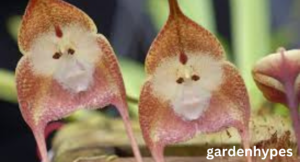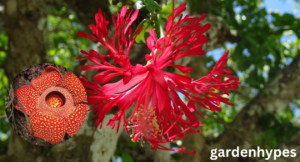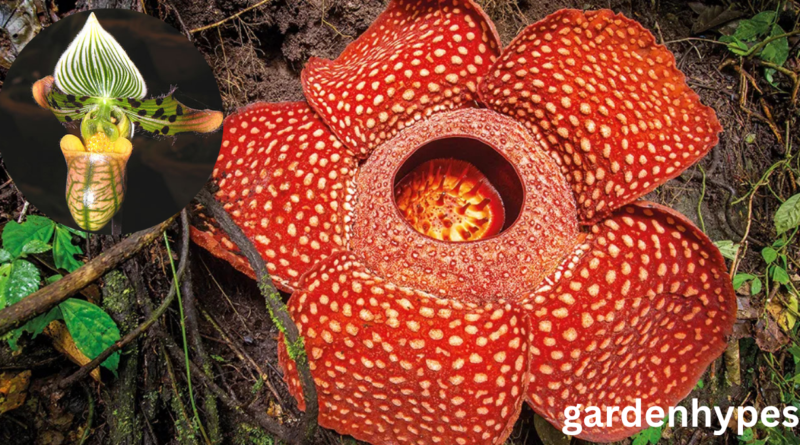The Ugliest Flower in the World Nature’s Most Bizarre Bloom
Beauty in nature is often celebrated through images of vibrant tulips, romantic roses, and delicate orchids. But what happens when nature doesn’t fit our aesthetic mold? Enter the “ugliest flower in the world,” a botanical marvel that’s both grotesque and fascinating. It doesn’t win beauty contests, but it steals the spotlight in terms of uniqueness, evolutionary brilliance, and shock value.
While we’ve been conditioned to admire symmetrical petals and sweet fragrances, nature has other plans. Sometimes survival trumps elegance. Sometimes, what we call “ugly” is simply something that doesn’t serve human sensibilities but does a brilliant job in the ecological theater. In this article, we explore what makes a flower “ugly,” the world’s most infamous specimens, and how both humans and artificial intelligence perceive natural beauty.
We’ll peel back the layers of biology, psychology, and AI analysis to discover how something as simple as a flower can challenge our deeply held beliefs about beauty.
click in link prickly pear
What Defines “Ugly” in the Floral World?
Beauty is in the Eye of the Beholder
Ever heard the saying “beauty is subjective”? That couldn’t be more true when it comes to flowers. What one person finds breathtaking, another might find bizarre or even repulsive. In most cases, we associate floral beauty with visual traits like symmetry, bright colors, soft petals, and pleasant scents. But nature didn’t evolve to impress us—it evolved to survive.
For instance, a flower that’s brown, bulbous, and emits the smell of rotting meat might be revolting to us. But to the flies it attracts, it’s irresistible. These kinds of discrepancies highlight how deeply human perception is rooted in cultural and psychological expectations.
The Science Behind Visual Repulsion
Why do we cringe at certain appearances? Psychology suggests that things we perceive as ugly often violate familiar patterns. Asymmetry, irregular textures, dull or “dirty” colors, and strange forms are visual triggers that our brains interpret as unsafe or abnormal. This is a defense mechanism from evolution—we are drawn to patterns we associate with health, fertility, and familiarity.
Now place that logic in the botanical world. Flowers that don’t conform to the classic look are automatically labeled as “ugly,” even if they are evolutionary masterpieces.
Why Humans Are Wired to Love Roses but Hate Rafflesia
Roses check all the boxes of human floral preference: symmetrical, soft, colorful, and fragrant. Now contrast that with Rafflesia arnoldii, a massive, flesh-colored, decaying-looking flower that smells like a decomposing animal. It’s the floral version of a horror movie.
But here’s the kicker—Rafflesia’s features aren’t a mistake. They’re finely tuned adaptations that help it attract the exact pollinators it needs. It’s not designed for human enjoyment. It’s designed for fly seduction. From an evolutionary standpoint, that makes it a winner.

Meet the Contender: Rafflesia arnoldii
The Largest, Smelliest, and Weirdest Flower on Earth
Rafflesia arnoldii is often the first flower mentioned in any “ugliest flower” list—and for good reason. Native to the rainforests of Southeast Asia, this monstrous bloom can grow over 3 feet in diameter and weigh up to 15 pounds. But it’s not just its size that shocks people—it’s everything else.
click in link prickly pear
Physical Appearance
Imagine a giant fleshy red flower with mottled white spots. Its texture resembles rotting meat, and it lacks leaves, stems, or even roots. It doesn’t photosynthesize like most plants. Instead, it’s a parasitic plant that lives inside the vine of another plant, appearing only when it’s ready to bloom. When it does, the result is both terrifying and fascinating.
It looks like a giant, oozing fungus more than a flower. Its five petals are thick and rubbery. At the center is a deep pit filled with bristles and an odd chamber used to attract flies.
Odor and Pollination Mechanism
Its common nickname is the “corpse flower,” and that’s not just poetic exaggeration. Rafflesia emits a stench similar to rotting flesh, which is exactly what it needs to attract carrion flies. These insects, tricked into thinking they’ve found a nice decaying body to lay eggs on, instead help pollinate the flower.
It’s macabre, sure—but it’s genius.
Habitat and Lifecycle
Rafflesia’s lifecycle is just as unusual. It spends most of its time hidden inside its host vine. When it finally emerges, the flower only lives for 5–7 days. During that time, it must attract pollinators, reproduce, and then rot away. Its rarity and short bloom time make it a bucket-list item for botanists and nature lovers, but it’s certainly not for the squeamish.
Other Notorious “Ugly” Flowers Around the World
Hydnora africana – The Alien from the Desert
This flower looks like something straight out of a sci-fi horror film. Found in southern Africa, Hydnora africana grows underground and only its strange, fleshy flower protrudes from the soil. It resembles a closed jaw or even some bizarre organic machinery. Like Rafflesia, it emits a foul odor to attract dung beetles, which then help with pollination.
Its evolutionary design may look monstrous, but it’s all part of a well-oiled ecological system. Hydnora lacks chlorophyll and also survives parasitically on the roots of other plants.
click in link prickly pear

FAQs
- What is considered the ugliest flower in the world?
The title of the ugliest flower in the world is commonly given to Rafflesia arnoldii, also known as the “corpse flower.” Its massive size, unpleasant smell of rotting flesh, and fleshy, decaying appearance make it widely recognized for its grotesque look. Despite its lack of traditional beauty, it plays a crucial role in its native ecosystem by attracting specific pollinators like carrion flies. - Why does the Rafflesia arnoldii smell so bad?
The foul odor of Rafflesia arnoldii mimics that of decomposing meat. This is an evolutionary adaptation designed to attract carrion flies and beetles, which are the primary pollinators of the flower. The insects are tricked into landing on the flower, thinking it’s a food source or a suitable place to lay eggs, inadvertently assisting in the pollination process. - Can AI determine what’s beautiful or ugly in nature?
AI can analyze visual data and recognize patterns based on training datasets, but its sense of beauty or ugliness is based entirely on human input and algorithms. While it can categorize symmetry, color, and texture, AI doesn’t “feel” or “judge” in the human sense. It reflects the aesthetic preferences embedded in its data, often mirroring human biases. - Are “ugly” flowers harmful or dangerous?
Most so-called “ugly” flowers aren’t harmful to humans. Their unpleasant appearance or odor is typically a survival adaptation aimed at attracting specific pollinators or deterring predators. However, some of them, like parasitic plants, can affect host vegetation. But to humans, they are usually more fascinating than dangerous. - What can humans learn from nature’s least attractive plants?
Ugly flowers teach us valuable lessons about biodiversity, adaptation, and ecological balance. They remind us that beauty isn’t the only valuable trait in nature. These plants often play crucial roles in their ecosystems, from recycling nutrients to sustaining unique pollinators. Their existence challenges our aesthetic biases and encourages a deeper appreciation for nature’s complexity.
